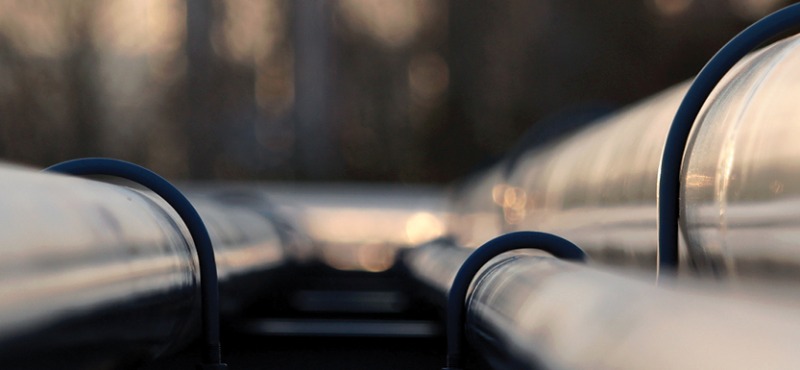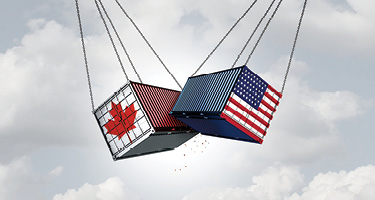Prices for crude oil began climbing again in spring 2016 and, with them, prices at the pump. But the effects on the U.S. economy won’t be easily undone.
Prices for U.S. crude bottomed out at around $26 a barrel in mid-February—the lowest they’ve been in a dozen years, obliterating profits at some oil and gas producers and bankrupting others. Oil prices began a rapid decline about two years ago, as oil companies outpaced demand by continuing to drill despite massive inventories. The drop wiped out tens of thousands of energy industry jobs and positions in ancillary industries, and wreaked havoc on energy-dependent communities in places such as Wyoming and West Texas.
“Oil is such a central factor in the rise and fall of so many different industries outside of energy alone,” says Andrew Challenger, vice president of global outplacement firm Challenger, Gray & Christmas, which tracks energy industry employment.
By early May, oil prices had bounced back to around $44 a barrel, but gas still costs about half what it did two years ago, with current prices averaging $2.19* a gallon, according to AAA. That’s kept U.S. gas consumption at a record high and overall driving costs low. It’s also led AAA and other travel organizations and experts to predict more road trips this summer. More time on the road leads to more traffic accidents, which could affect auto insurance rates.
“U.S. drivers put a record 3.1 trillion miles on the nation’s roads during 2015, thanks in no small part to cheap gas.”
Extensive U.S. oil inventories, along with Organization of the Petroleum Exporting Countries (OPEC) members’ failure to agree on production limits that would have cut supply, should keep oil plentiful for the foreseeable future, which could continue to curb price increases. “When you have inventory to pull from, the upside for prices is constrained,” says Mason Hamilton, a petroleum markets analyst with the U.S. Energy Information Administration. “The market is less nervous about not being able to acquire crude oil in case of a disruption because they are looking at thousands of tanks of stockpiled oil.”
Here’s a deeper look at how cheap gas has affected the economy, the job market, and consumers:
Energy company bankruptcies
Between July 2014 and December 2015, 35 U.S. oil exploration and production companies filed for bankruptcy protection, according to Deloitte. Another 50 companies, or about a third of the world’s oil producers, could go bankrupt this year, according to a February report from the management consulting firm. One of the biggest casualties to date is Energy XXI, which filed for bankruptcy protection on April 14. The oil and gas producer, which operates in several states, hired Vinson & Elkins, a 630-lawyer firm headquartered in Houston, to represent it during a Chapter 11 reorganization. The firm is one of a number finding work as debtors’ counsel in energy companies’ bankruptcy proceedings.
Energy industry jobs and CEO pay
Actions that oil and gas producers took to trim operating costs, including reorganizing and cutting back on drilling, have pummeled energy industry jobs and hurt pay for top executives. In the first three months of 2016 alone, oil-related job cuts totaled 50,053, according to Challenger, Gray & Christmas. The cuts represent more than a quarter (27 percent) of all U.S. layoffs during the quarter and come on the heels of 104,514 oil industry jobs lost in 2015, according to the firm. “The cuts we’ve been seeing at the beginning of last year and the beginning of this year absolutely coincide with the lower prices,” Andrew Challenger says. Cuts extend to steel makers, contractors, and other businesses that support the oil industry. Energy company chief executives’ pay shrank, along with profit margins and stock prices. For example, in 2015, Exxon and Chevron CEOs received small salary increases but saw total compensation drop by at least 15 percent because their bonuses and options were tied to the companies’ poor results, according to the Wall Street Journal.
Local economies
A stable U.S. economy is keeping overall unemployment low and encouraging consumer spending, but energy-dependent states that rode out the recession on the oil boom, such as North Dakota, Wyoming, and Texas, are now hurting. Fallout from oil producers shutting down wells has had a spill-over effect on everything from equipment rentals, retail sales, and hotel stays to residential real estate and building permits. In West Texas, for example, home values could fall if cheap gas sticks around.
Consumer spending
Outside of areas hit hard by the energy downturn, drivers are putting some of the money saved on gas into spending on travel, electronics, clothes, food—and cars. As of February, drivers purchasing new vehicles paid 1.7 percent to 2.8 percent more than the previous year, between $33,155 and $34,112, according to auto industry website The Detroit Bureau. Part of the increase stems from drivers opting for full-size pickup trucks and SUVs, or cars loaded with expensive options, according to the site.
Airline profits
Lower fuel prices punished energy companies but have been good for airlines’ bottom lines. U.S. and international carriers reported healthy or record profits in recent quarters due to lower fuel costs, along with higher passenger revenue. Alaska Airlines registered record earnings for the quarter ended March 31 because of jet fuel costs, which the company said were 29 percent below the same period the previous year. Virgin America, which Alaska is buying for $2.6 billion, said its Q1 2016 fuel prices were 36 percent lower than a year ago. Lufthansa, Southwest Airlines, and JetBlue also credited cheaper fuel, higher passenger revenue, and higher capacity flights for strong earnings. However, some airlines have issued guarded financial outlooks for the rest of 2016, due in part to the prospect of higher fuel prices in coming months.
Traffic congestion and air pollution
Whether in new vehicles or old, commercial or private, U.S. drivers put a record 3.1 trillion miles on the nation’s roads during 2015, thanks in no small part to cheap gas. This total bests the nation’s previous high of three trillion miles set in 2007, according to the Federal Highway Administration, and equals 337 round trips from Earth to Pluto. Mileage picked up when the economy improved, and people who’d been unemployed went back to driving to work, including some with long commutes. Even though today’s cars and trucks have emissions controls, more vehicles on the road means more air pollution. According to the Union of Concerned Scientists, transportation contributes to half of the country’s carbon monoxide and nitrogen oxide levels, and almost a quarter of its emitted hydrocarbons.
Trucking boom
Cheaper fuel helped push trucking industry freight tonnage to near record levels. Today, trucking handles 68.8 percent of all U.S. freight transportation, according to the American Trucking Association. As prices have fallen, carriers haven’t had to allocate as much of their operating costs to fuel: 34 percent in 2014 compared to 39 percent in 2012, according to a 2015 American Transportation Research Institute report.
Driving costs
Trucking companies aren’t the only ones with lower transportation expenses. The cost of owning and operating a car dropped to a six-year low of 57 cents a mile, or $8,558 a year, according to AAA. Lower fuel prices more than make up for higher fees for insurance, depreciation, and maintenance, according to the agency, which bases estimates on a typical car owner driving 15,000 miles a year. According to those numbers, drivers should spend $1,267.50 on gas in 2016, which is close to a quarter less than last year’s figures. Lower fuel prices led the Internal Revenue Service to drop the standard rate used to calculate tax deductions for using a car for business by six percent, to 54 cents a mile, from 57.5 cents in 2015.
Traffic accidents
Federal transportation safety watchdogs haven’t directly tied cheaper gas to an increase in traffic accidents, but state traffic agencies have. After years of declines, U.S. traffic deaths rose 9.3 percent in the first three quarters of 2015, according to the latest data from the National Highway Traffic Safety Administration. The agency estimates 26,000 people died in traffic accidents from January to September last year, and said fatalities in some regions jumped as much as 20 percent. A Maryland transportation department official blamed cheaper gas and distracted driving for a 17 percent increase in traffic deaths there in 2015, when residents drove 58 billion miles on state roads. Wisconsin reported a 13 percent increase in traffic deaths last year, an increase officials attributed to cheaper gas, along with warm weather and an improving economy.
















